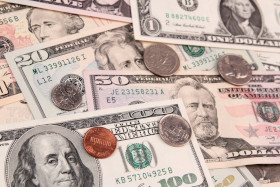The US dollar ended the trading week flat against a basket of currencies as an influx of economic data came out. While spending and inflation matched market expectations, consumer sentiment was a lot lower than the median estimates. With the first half of 2019 in the history books, the market now anticipates the greenback to either weaken or trade sideways in the second half.
According to the Bureau of Economic Analysis (BEA), personal income rose 0.5% in May, unchanged from April. This represents the fourth consecutive month of gains after a 0.1% decline in January. Personal spending was also up 0.4% last month, down from 0.6% in April. This marks the third straight month of gains after a 0.2% drop in February.
These figures also beat market forecasts. Analysts had penciled in a 0.3% gain in personal income and a 0.2% jump in personal spending.
In May, the personal consumption expenditure (PCE) price index advanced 0.2%, down from 0.3% in April. Prices for services climbed 0.2% and the cost of goods rose 0.1%.
On Friday, the Chicago purchasing managersâ index (PMI) for June slipped below 50 to 49.7. The May PMI clocked in at 54.2 and median estimates were 53.1.
Despite the commendable numbers, the Michigan Consumer Sentiment Index in June read 98.2, down from 100 in the previous month. The Michigan Consumer Expectations also fell to 89.3, down from 93.5 in May. The same survey also showed that inflation expectations dropped from 2.9% in May to 2.7% in June.
Next week, the June jobs report, manufacturing and non-manufacturing PMI, and construction spending will be released.
The US Dollar Index dipped 0.02% to 96.17, recording a weekly loss of 0.05%. In June, the index, which measures the greenback against six other major currencies, declined 1.6%. It is now flat on the year.
Analysts anticipate that the US dollar will continue weakening in the second half of the year or trade sideways. The buck could make considerable gains should the worldâs two largest economies strike a trade agreement. President Donald Trump and President Xi Jinping were seen in a sideline meeting at the G20 summit, leaving experts to deduce that a second trade truce might be on the horizon. But then some observers are warning that these advancements might be offset by a dovish Federal Reserve.
The USD/CAD currency pair dipped 0.02% to 1.3093, from an opening of 1.3096, at 18:30 GMT on Friday. The EUR/USD decreased 0.01% to 1.1368, from an opening of 1.1369.
If you have any questions, comments, or opinions regarding the US Dollar, feel free to post them using the commentary form below.
US Dollar Flat on Mixed Data As Market Expects Sideways Trade in Second Half
